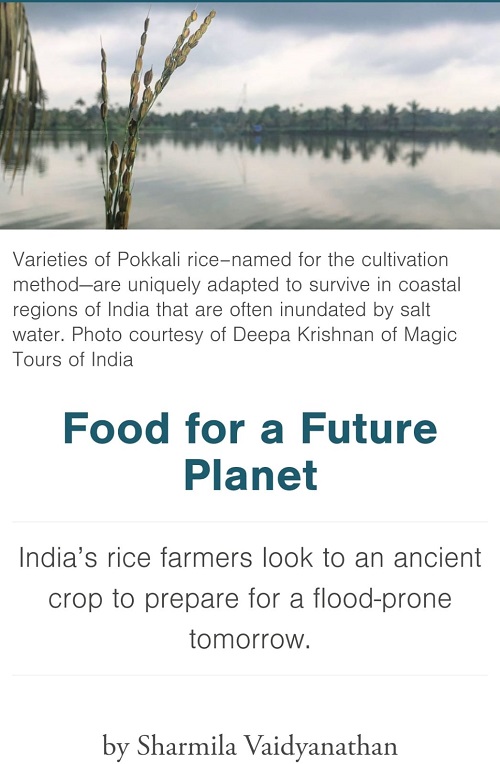India’s rice farmers look to an ancient crop to prepare for a flood-prone tomorrow.
As published in Hakai on July 22, 2021.
For years, the paddy fields of Ezhikkara, a coastal village in the southern state of Kerala, India, were in a state of neglect. A lack of resources and a loss of enthusiasm had led villagers to abandon crops on the field. But, as a growing number of scientists and farming advocates look to traditional rice varieties in the search for climate-resilient food, that narrative has begun to change. And on a bright October day in 2014, a group of 300 people traveled from other parts of the state to join villagers in a harvest festival aimed at breathing life back into a cultivation method that originated centuries ago. The harvesters, many with sickles in hand, shined light on a type of crop in strong need of supporters: Pokkali rice.
“Pokkali” is the all-encompassing term that refers to the salt-tolerant rice varieties grown by the Pokkali method of cultivation, in which farmers alternate raising rice with prawns and shrimp, and sometimes fish. The unique method of paddy cultivation is specific to parts of central Kerala where it’s practiced in tidal wetlands. In Malayalam, the local language, pokkam means height and ali means flame, explains K. G. Padmakumar, director of the International Research and Training Centre for Below Sea Level Farming in Kerala.
True to their name, Pokkali varieties grow up to two meters. It’s their ability to stand tall above brackish waters that has piqued the world’s interest in how they may be a uniquely climate-adaptive food.
Read the complete story here. –> Food for a Future Planet
